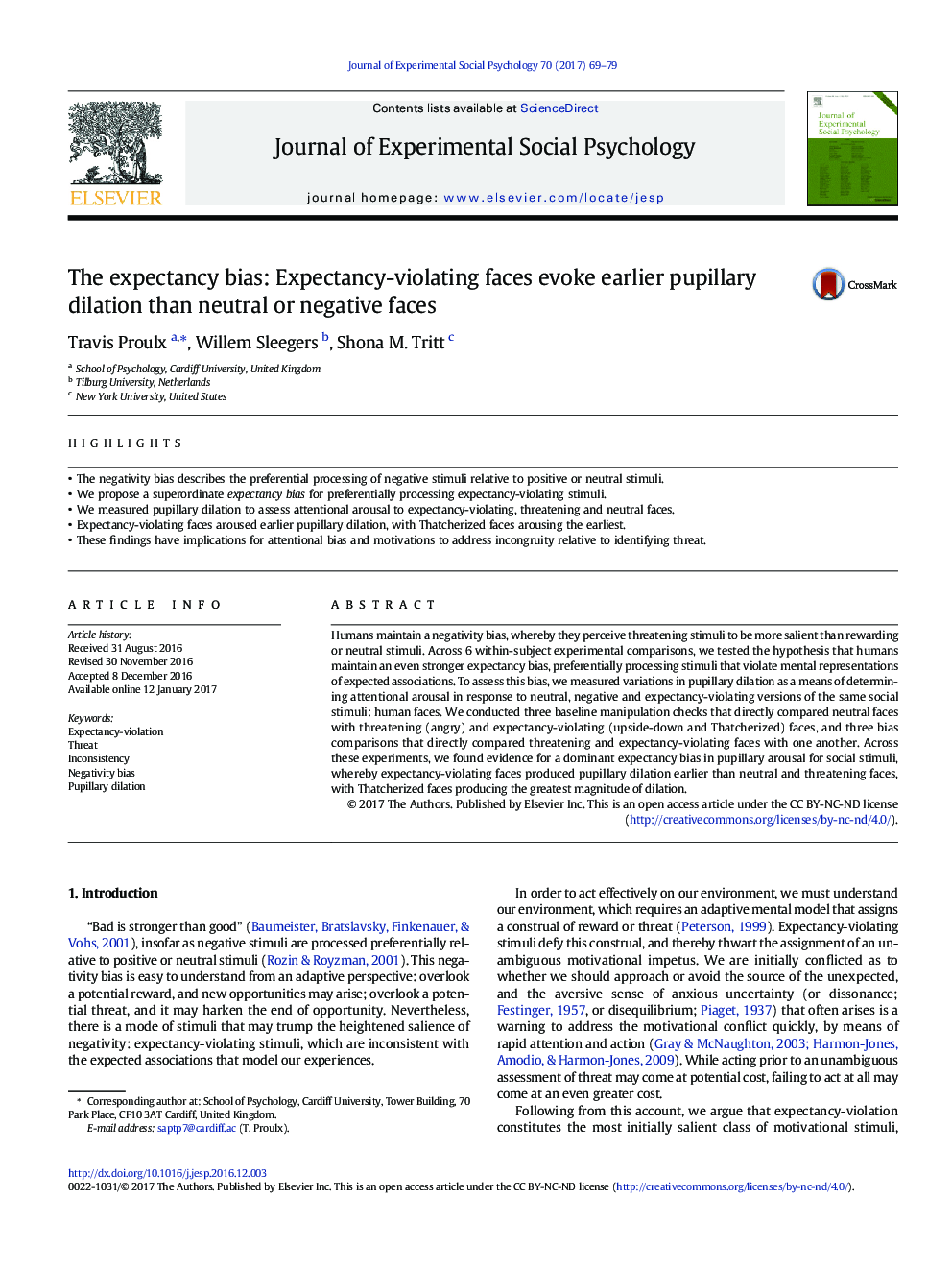| Article ID | Journal | Published Year | Pages | File Type |
|---|---|---|---|---|
| 5045633 | Journal of Experimental Social Psychology | 2017 | 11 Pages |
â¢The negativity bias describes the preferential processing of negative stimuli relative to positive or neutral stimuli.â¢We propose a superordinate expectancy bias for preferentially processing expectancy-violating stimuli.â¢We measured pupillary dilation to assess attentional arousal to expectancy-violating, threatening and neutral faces.â¢Expectancy-violating faces aroused earlier pupillary dilation, with Thatcherized faces arousing the earliest.â¢These findings have implications for attentional bias and motivations to address incongruity relative to identifying threat.
Humans maintain a negativity bias, whereby they perceive threatening stimuli to be more salient than rewarding or neutral stimuli. Across 6 within-subject experimental comparisons, we tested the hypothesis that humans maintain an even stronger expectancy bias, preferentially processing stimuli that violate mental representations of expected associations. To assess this bias, we measured variations in pupillary dilation as a means of determining attentional arousal in response to neutral, negative and expectancy-violating versions of the same social stimuli: human faces. We conducted three baseline manipulation checks that directly compared neutral faces with threatening (angry) and expectancy-violating (upside-down and Thatcherized) faces, and three bias comparisons that directly compared threatening and expectancy-violating faces with one another. Across these experiments, we found evidence for a dominant expectancy bias in pupillary arousal for social stimuli, whereby expectancy-violating faces produced pupillary dilation earlier than neutral and threatening faces, with Thatcherized faces producing the greatest magnitude of dilation.
